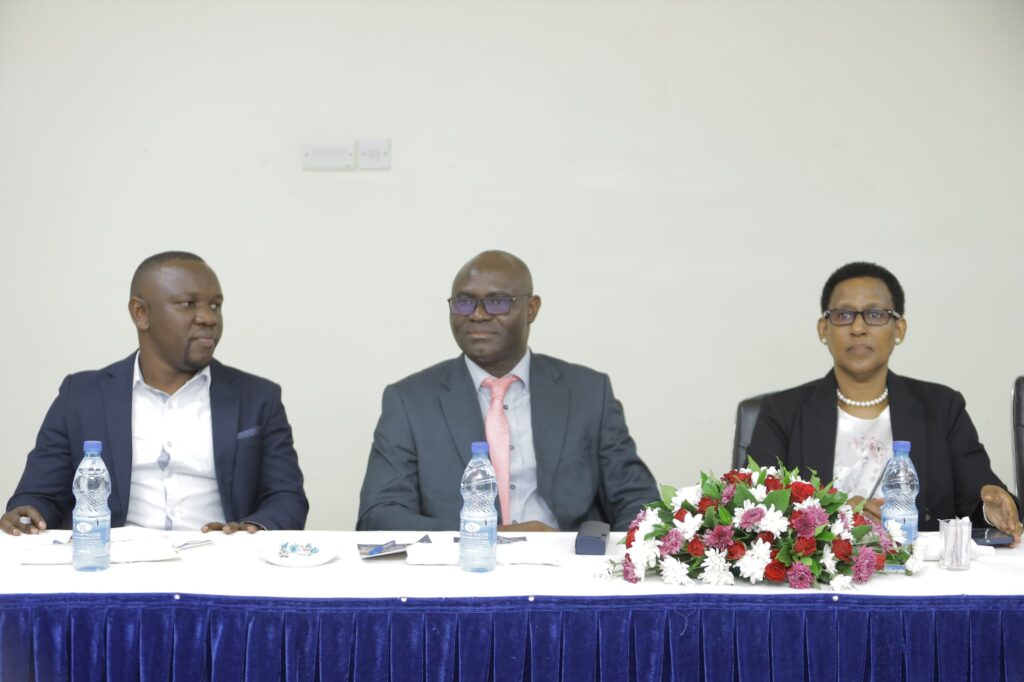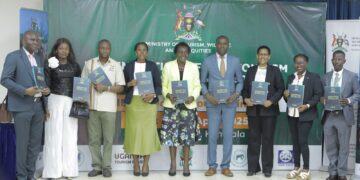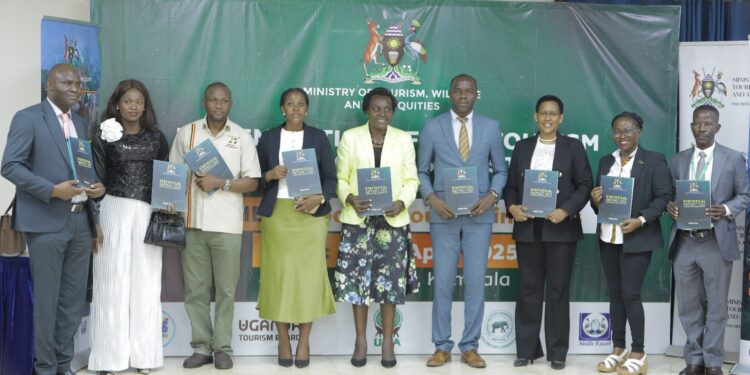Uganda’s tourism sector is experiencing a remarkable resurgence, with new statistics revealing a significant increase in the number of foreign tourists visiting the country.
According to the Tourism Trends and Statistics Report 2025, the year 2024 marked continued growth and stability in Uganda’s tourism sector, with several key indicators showing strong performance and sustained interest from both international and domestic travellers.
The report revealed remarkable growth in 2024, marked by a 7.7% rise in international tourist arrivals, reaching 1,371,895, up from 1,274,210 million visitors in 2023.
“This growth was largely driven by African markets, with 89.2% of visitors originating from the African continent, particularly from neighbouring East African Community (EAC) states,” the report stated.
It also noted that the United States, India, and China remained leading overseas markets, with notable increases from Canada and Bangladesh, signalling new frontiers in long-haul travel to Uganda.
In the same year, tourism earnings rose by 26% to USD 1.28 billion, fueled by longer stays (averaging 8.7 nights) and increased spending (averaging $125 per night and $2,114 per leisure tourist).
Hotel occupancy averaged 53.2%, with Kampala leading at 68.3%, while domestic tourism remained strong, recording nearly 1 million visits to national parks, the Uganda Wildlife Education Centre (UWEC), and cultural sites.
Outbound travel also rose by 9.7%, with 765,059 Ugandans travelling abroad. Meanwhile, leisure travel rose to 19.2% of all arrivals, attributed to campaigns such as “Explore Uganda – The Pearl of Africa.”
In 2024, tourism contributed 6.6% to GDP and 7.2% to national employment, supporting over 800,000 jobs across key sectors such as transport, accommodation, and food services. Tourism directly contributed 3.2% to GDP (UGX 6.06 trillion), according to Basil Ajer, Director of Tourism.
Ajer noted that August remained the peak month for tourism activity. “Looking ahead, the Ministry of Tourism, Wildlife, and Antiquities (MTWA) will prioritise the diversification of source markets, improvement of product offerings, and expanded investment in cultural, eco-, and adventure tourism.

Targeted outreach to high-growth markets such as China, Bangladesh, and Canada, combined with strengthened efforts in traditional regions like Europe and the USA, will form the bedrock of Uganda’s tourism promotion strategy. Moreover, with increased global interest in sustainable travel, Uganda’s rich biodiversity—including its iconic mountain gorillas, national parks, and cultural heritage—positions it favorably for continued growth,” he said.
Speaking at the dissemination event, Doreen Katusiime, Permanent Secretary at the Ministry of Tourism, said Uganda not only kept pace in 2024 but strengthened its position in the region, particularly within Sub-Saharan Africa, where it now holds a 3.2% share of all international tourist arrivals.
She noted that focus must now turn toward sustaining and amplifying this growth. “We must deepen diversification, improve infrastructure, and invest in new tourism products—particularly in cultural heritage, wellness, eco-tourism, and conference tourism (MICE).

Targeted engagement in emerging long-haul markets such as China, Bangladesh, and Canada, alongside the continued cultivation of regional partnerships, will be key to expanding our tourism base,” Katusiime emphasised.









